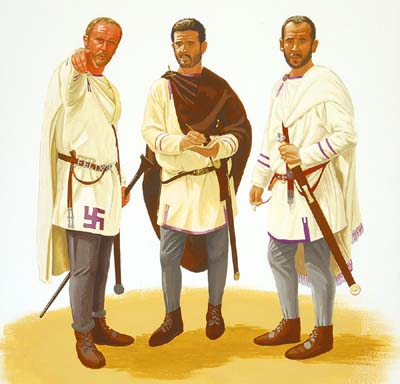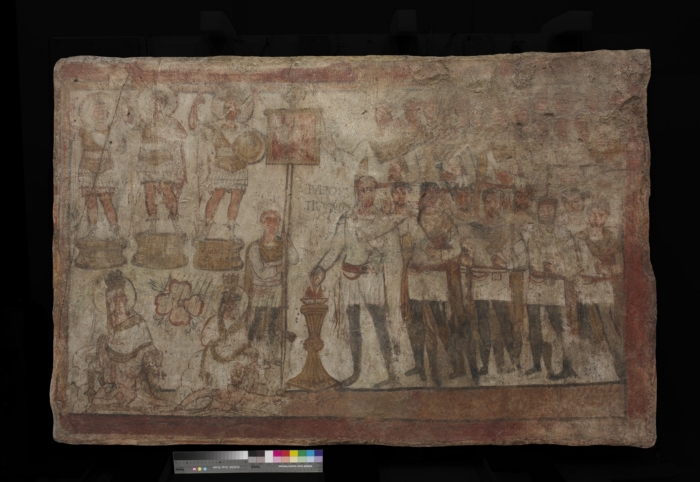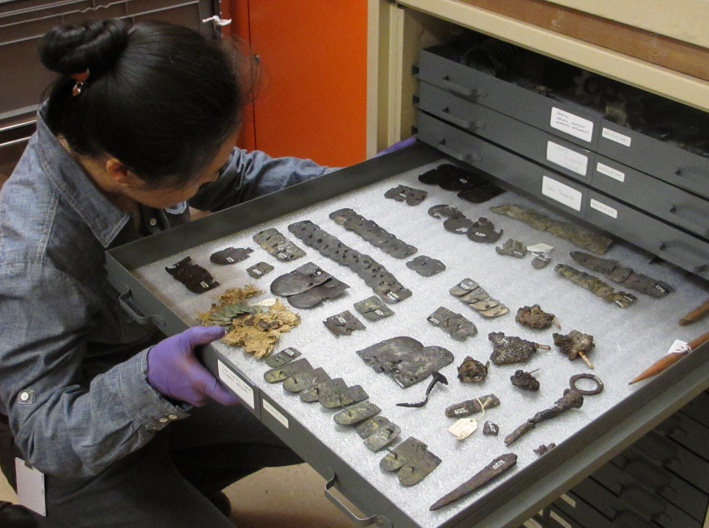Re-enactment, Archaeology, and the Ancient Rome & Greece Weekend: I of IV

As an archaeologist the main goal in my work is to understand the people of the past, and to share that understanding with others. As a museum archaeologist, a good way to share that knowledge is at family weekends, like the ROM's Ancient Rome & Greece Weekend on June 15th-16th 2013!
I have worked in Syria since 1998, although the recent civil war prevents me continuing that work. One of the most interesting sites in Syria is Dura-Europos, often called "The Pompeii of the Syrian Desert" (for further information, see archaeologist Simon James' website, Yale University, Wikipedia , and this video). Unlike Pompeii the town was not buried by a volcano, but by humans. In 256 AD it was a Roman city, on the eastern edge of the Empire, but they were concerned about invasion by the new dynasty in Iran, the Sasanians. So before 256 the Roman authorities buried the areas of the city behind the walls, covering some of the buildings completely. This included some very important structures, such as what is arguably the earliest church in the world, a very early synagogue , a mithraeum, and a temple to the Palmyrene Gods, all with remarkable wall-paintings. But in 256 the city fell to the Sasanian Persians despite the precautions, and was never occupied again. Burial and abandonment preserved the city, and also the battle for the city itself, as Roman and Iranian fighters were found where they had fallen in battle (in one case as the result of what is thought to be a very early chemical warfare attack ). It being the desert, the dry conditions led to unusual preservation. For instance we have more Roman shields preserved from Dura than from anywhere else in the Roman world, and there is a great deal of other military equipment, some of which is at the ROM. Apart from the archaeological remains, there is a very important wall-painting in the temple of the Palmyrene Gods of a group of Roman soldiers with their tribune, Julius Terentius. This painting, now at Yale, provides some of our best information of what Roman soldiers of the time actually looked like.
With all this information, and with my interest in Syrian archaeology, I thought it would be interesting to actually recreate the equipment of one of the Roman defenders of Dura-Europos, to gain a greater understanding of the equipment, and so of the people themselves. Before Ancient Rome & Greece Weekend on June 15th-16th I will tell you more about the equipment that I have had made, and if you come to the ROM on Saturday the 15th June, you can talk to me about my "impression" of the Roman tribune Julius Terentius. So stay tuned to this space, and come to the ROM's fun family weekend on June 15th!

This wall painting from the Temple of the Palmyrene Gods in Dura Europos shows the tribune Julius Terentius performing an official sacrifice before a military standard, with a number of his men standing behind him (from the Yale excavations at the site, Yale University Art Gallery 1931.386).

The ROM's Kay Sunahara bringing out remains of military equipment from Dura-Europos.
